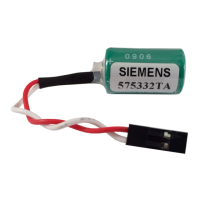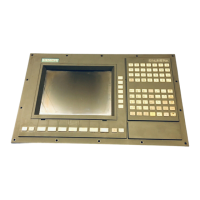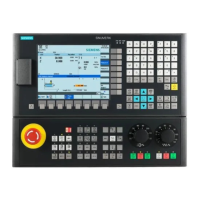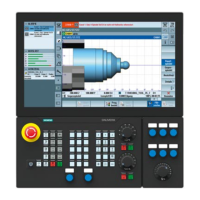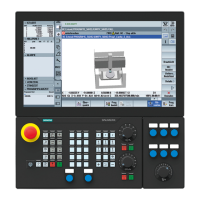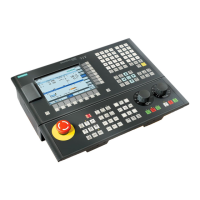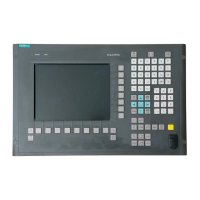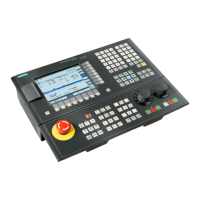Tool offsets
8.2 Language commands for tool management
Job planning
Programming Manual, 03/2006 Edition, 6FC5398-2BP10-1BA0
8-5
Example of the NEWT function
With the NEWT function you can create a new tool with name in the NC program. The
function automatically returns the T number created, which can subsequently be used to
address the tool.
If no duplo number is specified, this is generated automatically by the tool manager.
DEF INT DUPLO_NO
DEF INT T_NO
DUPLO_NO = 7
T_NO=NEWT("DRILL", DUPLO_NO) ;Create new "DRILL" tool with duplo number 7.
;The created T number will be stored in T_NO.
Example of the DELT function
The DELT function can be used to delete a tool without referring to the T number.
Example of the GETT function
The GETT function returns the T number required to set the tool data for a tool known only
by its name.
If several tools with the specified name exist, the T number of the first possible tool is
returned.
Return parameter = –1: the tool name or duplo number cannot be assigned to a tool.
T="DRILL"
R10=GETT("DRILL", DUPLO_NO) ;Return T number for DRILL with
;duplo number = DUPLO_NO
The "DRILL" must first be declared with NEWT or $TC_TP1[ ].
$TC_DP1[GETT("DRILL", DUPLO_NO),1]=100 ;Write a tool parameter
;(system variable) with tool name
Example of the SETPIECE function
This function is used to update the piece number monitoring data. The function counts all of
the tool edges which have been changed since the last activation of SETPIECE for the stated
spindle number.
SETPIECE(x,y)
x ;Number of completed workpieces
Y ;y spindle number, 0 stands for
;master spindle (default setting)

